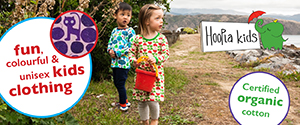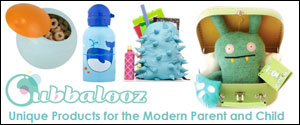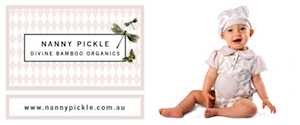feeding toddlers
Feeding toddlers and preschoolers can sometimes be a problem for parents. Food and eating is often something toddlers want to be in control of. Toddlers’ appetites naturally decrease during the second year of life. They are not growing as much and they don’t need as much to eat. At the same time they are learning to try different foods, some of which they might not like. Toddlers can be worried by too many changes and like to keep to the few things they know well. It is important for them to show that they are starting to learn to think for themselves by saying “No”.
The world is becoming a very exciting place and there are lots more interesting things to do than eat! Getting into battles with toddlers about food and eating can only make life miserable for everyone.
It is normal for young children to be wary about eating a food they have not met before and these are ways to help them.
Children have the natural ability to know how much food they need and they do not usually overeat. However they can easily lose this skill. If children are pushed to eat more than they want or encouraged to finish everything on the plate, they may learn not to stop when they have had enough. This can lead to weight problems later.
Remember – it is the parent’s job to provide the food. It is the child’s job to decide whether, what and how much to eat.
Note: Learning to feed themselves is often a messy business for toddlers. If you don’t like mess, put newspaper on the floor and a big feeder or bib on your toddler. The more practice they get in doing it for themselves, the quicker they will learn to feed themselves well.
Article provided courtesy of Parenting SA
The world is becoming a very exciting place and there are lots more interesting things to do than eat! Getting into battles with toddlers about food and eating can only make life miserable for everyone.
What parents can do
A healthy child will not starve or be undernourished if he has access to a variety of wholesome food. If you are really worried about what your toddler eats, keep a chart for a week and write down everything he eats. You will probably be surprised, but if you are in doubt, check it at your local child health centre. If your child eats very poorly, a vitamin supplement could be useful. Regular checks for height and weight at your local child health centre will be helpful to monitor his growth and development.How young children learn about food and eating
It is important that toddlers see parents eating and enjoying healthy food - are you a good role model for your child?It is normal for young children to be wary about eating a food they have not met before and these are ways to help them.
- Offer the food in a happy environment. Children tend to like foods that they associate with fun. (This is why fast food outlets can become so popular.)
- Keep offering the food on several occasions. It can take 8 to 15 tries before the food becomes familiar and a child accepts it.
- Children are more likely to try a food when they see the rest of the family or other children enjoy it.
- Don’t insist that the food is eaten and don’t offer a reward for eating it. Both of these measures have been shown to make children dislike that food.
- Children are more likely to want a food if they are told they can’t have it or if it is used as a reward.
Children have the natural ability to know how much food they need and they do not usually overeat. However they can easily lose this skill. If children are pushed to eat more than they want or encouraged to finish everything on the plate, they may learn not to stop when they have had enough. This can lead to weight problems later.
Remember – it is the parent’s job to provide the food. It is the child’s job to decide whether, what and how much to eat.
What to feed toddlers
- Toddlers will eat different amounts on different days. This depends on their day’s activity, if they are tired or unwell.
- Offer a variety of healthy foods each day. The following is a rough guide to the amounts and types to offer, but don’t worry if your child doesn’t actually eat all of these every day.
- Vegetables - two to four serves
- Fruit - one to two serves
- Dairy foods (milk, cheese, yoghurt) – three serves
- Meat, eggs, fish, lentils etc – one to two small serves
- Breads, cereals, rice and pasta – three to five serves
- Young children need some fat in their diet for growth and energy. However it is best to give reduced fat or low fat milk and dairy foods from about 2 years of age. Skim milk should be given only after the age of 5 years.
- Soy milk is not recommended for toddlers, but if you do use it, choose a type that has had calcium added.
- Young children may not be able to cope with a lot of fibre. High fibre food or a lot of fruit juice may cause diarrhoea.
- Children don’t mind having the same thing over and over. In fact toddlers like it. We get sick of eating the same foods day after day, but some toddlers prefer this and will only eat two or three foods for weeks at a time. This is quite normal and won’t last forever. In fact usually by the time they are in primary school children will try anything, especially at friends’ homes.
Encouraging toddlers to eat
Children have small stomachs - about the size of their fist, and large serves can be off-putting.- Provide a range of nutritious food and offer children a choice.
- It is better not to have unhealthy snack foods (especially snacks like biscuits, soft drinks and sweets) in the house. This will prevent toddlers being tempted.
- Avoid cordials and too much fruit juice as these are high in sugar and take away the appetite for other foods.
- Allow children to help prepare the meal. It takes longer but encourages interest in the food.
- Keep mealtime serves of food small and allow children to ask for more. Remove uneaten food without comment.
- Don’t use dessert as a bribe to eat the rest of the meal. This makes dessert too special. If you do have desserts make sure they are nutritious such as fruit or milk puddings. Give small serves.
- For a treat you can sometimes make the meal into a picture such as a potato face with pieces of vegetable for the eyes, nose and mouth.
- Having a friend over for a meal often encourages the toddler to eat.
- Sometimes vary where you serve the food. For example at your toddler’s own table in the playhouse, or a picnic in the garden or serve a meal where the food is put on plates in the centre of the table and everyone helps themselves to what they want.
- Sometimes it is possible for toddlers to help grow vegetables in a window box or small area of the garden.
- Give your toddler the main part of her evening meal early (around 4.30pm) so she is not too tired to eat. She can still have a small portion of the meal with the family later if you like to eat together. A cold meal such as meat, bread and fruit or salad is nutritious. Raw grated vegetables are just as healthy as cooked. Or you could freeze part of the evening meal from the day before and reheat it for your toddler.
-
Do not ever try to force a toddler to eat. It can cause choking and make the child dislike the food. Adults would not like to be forced to eat food that they
don’t like. - Keep a relaxed eating environment and leave the eating up to your toddler
Note: Learning to feed themselves is often a messy business for toddlers. If you don’t like mess, put newspaper on the floor and a big feeder or bib on your toddler. The more practice they get in doing it for themselves, the quicker they will learn to feed themselves well.
Snacks
Active young children don’t like to sit still for long and may do better with several small meals rather than just three larger ones. Healthy snacks are a great idea. Here are some suggestions for snacks or lunches.- Pieces of fresh fruit and vegetables (be careful of hard bits of food that could break off and cause choking) - grate or cook raw carrot, apple etc.
- Cheese cubes or sticks.
- Dry biscuits (unsalted) with creamed or cottage cheese, or peanut paste or a little Vegemite.
- Bread or toast with spreads.
- Iceblocks made from freezing fruit or pure fruit juices (whole bananas freeze well).
- Hard boiled eggs.
- Yoghurt.
- Home made biscuits. You can use little fat or sugar, no salt and add wholemeal flour, rolled oats, dried or fresh fruit, grated vegetables.
- Do not give whole nuts to toddlers.
Drinks
- Water is the best drink for thirst. Always have plenty of water available and show your toddler that you enjoy drinking it too.
- Avoid fruit juice drinks because they contain a lot of sugar. If fruit juice is given it should be diluted with water and only in small amounts.
- Full cream milk is a good source of nutrition but limit it to about 600 mls a day so there is room for other foods. After 2 years of age, change to reduced fat or low fat milk. Skim milk can be given after the age of 5 years.
- Tea, coffee, alcohol, and 'sports' or 'energy drinks' should not be given.
Vegetarian diets
If your family does not eat meat your child can get good nutrition from other foods.- Milk, cheese and eggs are excellent sources of animal protein.
- Dried beans and peas, seeds and nuts give vegetable protein. (Grind nuts into a paste for children under five years.)
- When vegetable protein is eaten with whole grain cereals you get a complete protein (which is as good as animal protein). It contains all the building blocks your body needs. Examples are soy beans with brown rice, or wholemeal bread with peanut paste.
- Include plenty of fresh fruit and vegetables in your diet.
- If you are a Vegan and don’t eat any animal foods (milk, cheese, eggs etc) it is harder to meet all your child’s food needs. Vitamin B12 will be missing and is essential for growth and development, especially of the nervous system. You need to give supplements of Vitamin B12 to your child. (Some soy bean products have Vitamin B12 added.)
Reminders
- Healthy children will not starve if they have access to a balance of nutritious food.
- Children, like adults, enjoy choosing what they eat and how much (within reason).
- It’s the parent’s job to provide the food - it’s the child’s job to decide whether, what and how much to eat.
- If you don’t have snack foods and soft drinks in the house, your child will not fill up on them and it will be cheaper too.
- Young children have small stomachs. They need to eat less, and more often.
- Don’t try to force your children to eat or punish them for not eating.
- Don’t let mealtimes become a battlefield. Food is to be enjoyed.
- If you find mealtimes very stressful with your toddler you might need to try a different approach.
Article provided courtesy of Parenting SA
advertisements






| 1. On the go accessories for school and preschool - these will make your child's school day! 2. Kid's bedroom art ideas - brighten up their spaces 3. How to dress your child for a special occasion 4. Frozen party - Gorgeous but manageable ideas for your Disney Frozen fan 5. Creamy Harissa Slow Cooked Beef - This recipe is warming and creamy. |
|
|
| 1. Flying with kids - How do the words “airplane flight” and “children” make you feel?... 2. Horse Party - ultimate horse themed party. 3. Toddlers - Living with little people: patience and understanding required! 4. Lalaloopsy party - How to craft your party around a centrepiece 5. Superkids scroggin - An innovative lunchbox idea |
|
|
| 1. Scone peapods - the cutest and most delicious vegetables around 2. Witchery Kids Clothing - with their fun blog showing the clothes in action! 3. Baby Clothes - Upcycled keepsakes. 4. Horse Party - ultimate horse themed party. 5. Best indoor playsets - Unbelievable fun most of us can only dream of! |





